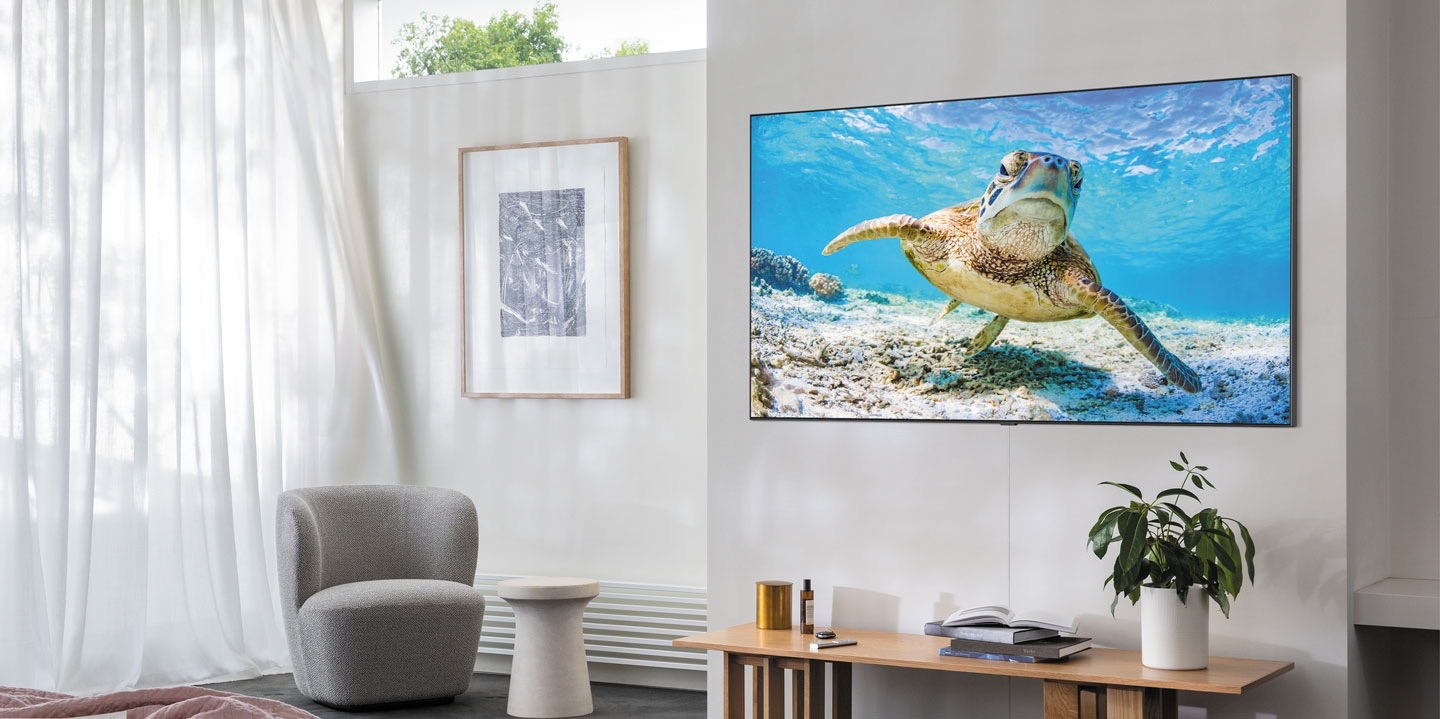Samsung QLED TV vs OLED TV (2020): which is better?

With so many different kinds of TVs these days, it’s hard to comparison shop. Before you buy, make sure you know the difference between Samsung’s QLED TVs and OLED TVs.
They might sound the same, and differ by only a single letter, but believe me, they’re completely different.
Luke Hopewell is a gadget veteran of over 10 years. He’s reviewed over 100 TVs in his time, and been to the magic factory where they’re all made. He’s lost more remotes than he’s found, and if you ask him nicely, he’ll tell you how tech companies get tech writers to review TVs…
QLED vs OLED: What is QLED?
The Q in QLED stands for Quantum. Specifically, it’s a quantum dot LED backlit TV.
What this means is that it’s a typical LED TV on the inside – where a backlight is shone through a panel to produce a bright, high-quality image – but with a techy twist.
These panels are made up of layers to help display the best image possible. QLED TVs have a quantum dot layer that takes the blue light shone through the panel by the backlight to create sharper and more photorealistic colours.
Specifically, it focuses the red, green and blue colour gamut to create a sharper image with less “crosstalk”, where the colours blur together inside the pixels which reduces overall quality.
So what’s the competition like?
QLED vs OLED: What is OLED?
OLED stands for Organic Light-Emitting Diode. While it might have “LED” in the name, it’s very different to its backlit competitors like QLED.
Rather than having to blast light through a panel in order to produce vivid colours, OLED pixels are all individually-lit and controlled.
That means you get truer colour reproduction, but more importantly, you get the blackest blacks you can.
Because OLED pixels are all self-lit rather than relying on a backlight system, when an OLED pixel displays black, it’s actually just turned off on that section.
That gives you the truest black around. Old-school plasma TV lovers will absolutely get a kick out of how true-to-life OLED is.
The reason OLEDs are more expensive is because it’s not only a more premium product, but also because it’s much, much harder to manufacture.
That’s why OLED panels are far more expensive. They’re harder to make, so their manufacturers charge more.
QLED vs OLED: What’s the difference?
Quantum dot – or QLED TVs – are a favourite of Samsung. OLED TVs are expensive and difficult to produce for reasons we’ll soon learn about.
Rather than go through the pain of OLED production, Samsung instead prefers to augment an LED TV with quantum dot technology for quality that’s almost as good for a fraction of the price.
A 4K 55-inch Samsung QLED TV will run you considerably less than something like a 4K 55-inch LG OLED TV, to the tune of almost half the price.
It’s also worth noting that OLED TVs can be susceptible to what’s known as “burn in”, where an image left on the panel for too long can leave a sort of afterimage burned into the screen as you use it.
Burn in is less of a problem these days, but QLEDs aren’t particularly suceptible to it in the same way that OLEDs are.
That’s why Samsung has had a range of QLED art TVs known as The Frame for a number of years. No real risk of burn in when holding an image on a QLED screen to mimic a picture.
QLED vs OLED: Which one should you buy?
It truly depends on what you value.
OLED will give you the best blacks around. Nothing is blacker than the part of your TV that is off. QLED will try to get as close as possible, but you’ll still see shades of grey and not true black.
On some lower-quality streams, your QLED blacks may even become streaky as the TV attempts to guess which colour you’re going for.
Similarly, colours are more vivid on OLED, but new QLED technology is truly nipping at OLEDs heels here.
Of course, it’s not always about the panel. You might also like to know that both Samsung and LG have made significant strides in how you connect devices to their televisions for 2020 and 2021.
That’s significant considering that new gaming consoles like the Xbox Series X and PlayStation 5 are coming to market.
With this in mind, you’ll want to check if the TV you’re buying has support for Variable Frame Rate – also known as VFR. You’ll also want to check for HDMI 2.1 support while you’re there.
And at the same time, sound is important. These manufacturers are now splitting up their range to include multiple speaker configurations in what is ostensibly the same panel.
If you’re not going for a sound bar, this is something you’ll need to look out for and weigh up against the size of your room.
There’s also how the TV looks when it’s both on and off. Samsung takes inspiration from its Frame range of TVs and outfits new QLEDs with what’s called Ambient Mode so the TV can fade into the backdrop. Good if you want your TV to be a tool and not a monument in your living room.
Nothing compares to getting the two side-by-side in a showroom and looking at the colours, blacks and designs for yourself.
Read more
Before you buy an OLED, consider the difference between LG’s NanoCell and OLED panels also. I also wrote what I wish I knew about buying an OLED before I bought one.
Luke Hopewell is the editor and co-founder of Redaktör. He's previously been the Editor of Gizmodo, Founding Editor of Business Insider Australia, Editorial Lead for Twitter Australia and more.


